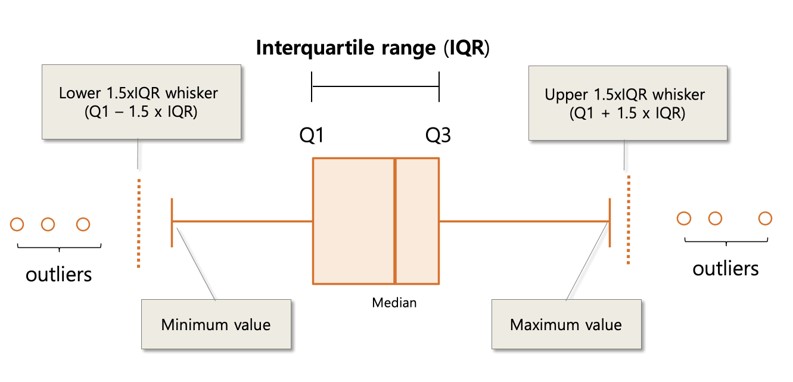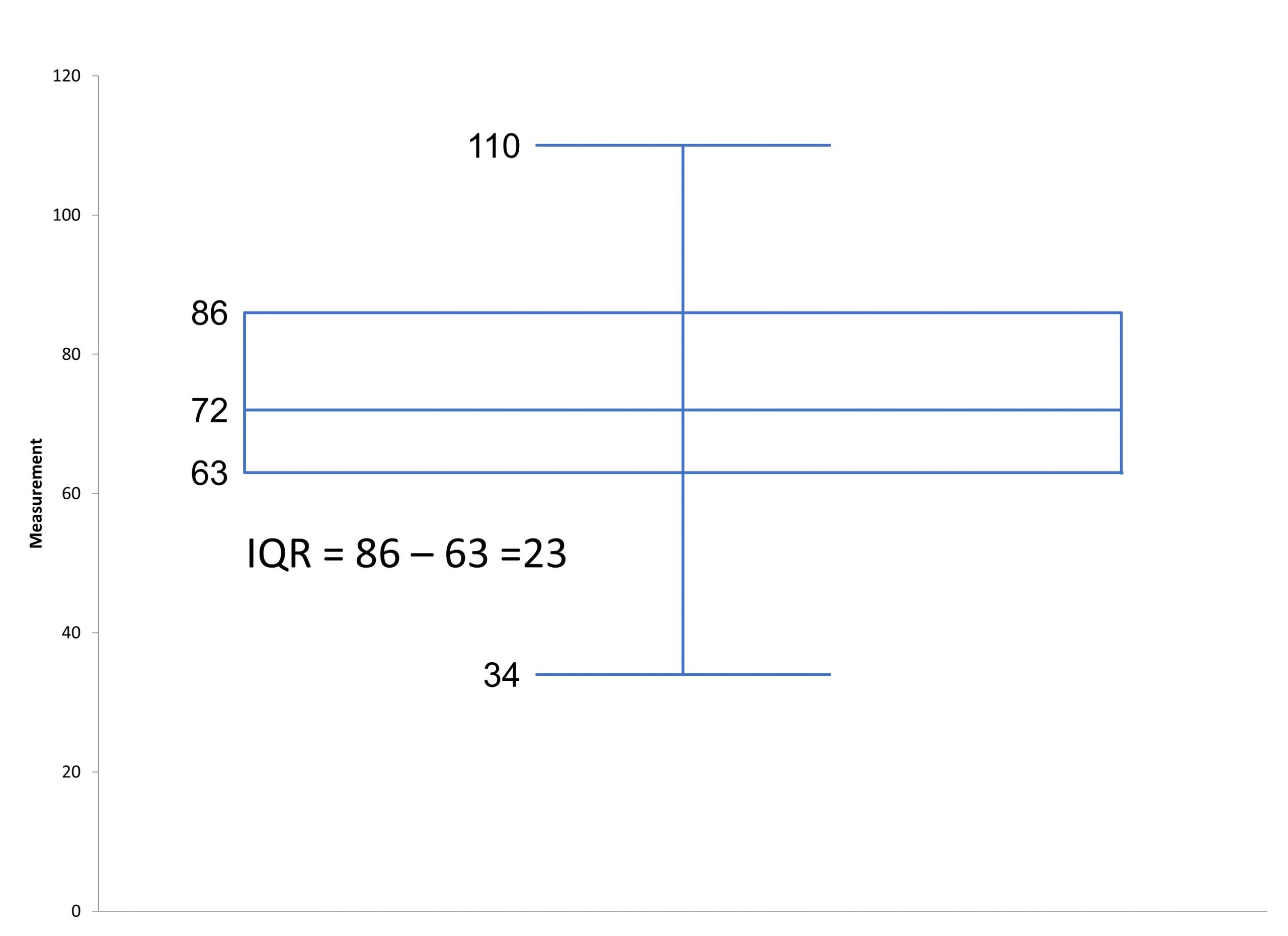
In a box plot, it is easy to see the range of where 50% of your data lies. Let’s examine this a little further by describing the interquartile range.
Quartiles can be defined as dividing your data into 4 parts or quarters of approximately equal size. You can define the 4 parts in terms of three quartiles. To compute or define your quartiles, you must order your data from low to high values.
The first quartile is that value where 25% or ¼ of your data falls below that value. The second quartile equals the median where you can expect 50% of your data to fall below that value. The third quartile is the value where you can expect 75% of your data to fall below. Remember this only can occur if the data is put into an ordered format.
Overview: What is the interquartile range?
The interquartile range (IQR) is an important concept in the context of constructing and using a box plot. The box plot is a graphical representation of your data which shows as a box of the first and third quartiles. The median or second quartile is shown in the box representing the value where 50% or half the data falls above and below the value.
The difference between the first and third quartiles is known as the interquartile range. If you multiply your interquartile range by 1.5 and add and subtract it from your first and third quartiles, you have a benchmark number for determining whether your data has any outliers.
The box plot then draws two whiskers or lines representing the maximum and minimum values in your data that fall within the 1.5 x IQR values. Any data values exceeding the calculation of 1.5 x IQR are defined as outliers and are shown as a dot. See the figure below:

An industry example of the interquartile range
John collected some data on invoice processing time. He wanted to know what range of values would tell him where 50% of his processing times fell. He decided to make a box plot of his data and from that he would know the interquartile range. This range would capture 50% of his time data. Based on the box plot below, the answer to his question is 23 minutes.

Frequently Asked Questions (FAQ) about the interquartile range
How do you calculate the interquartile range?
To calculate the IQR, you must subtract the value of the first quartile from the value of the third quartile (IQR = Q3 – Q1).
What percent of the data does the interquartile range encompass?
Fifty percent of the data is captured by the interquartile range.
How do you calculate a quartile?
Quartiles are the values that divide a list of numbers into quarters or four equal parts when the list of numbers is in sequence.